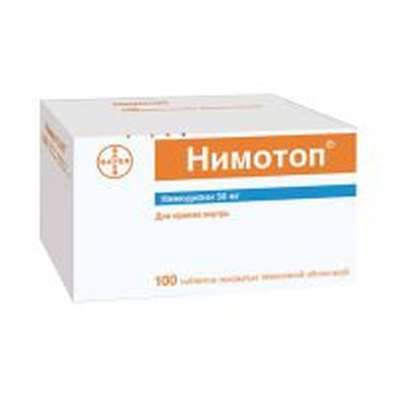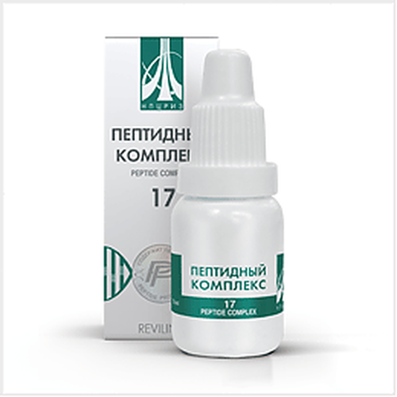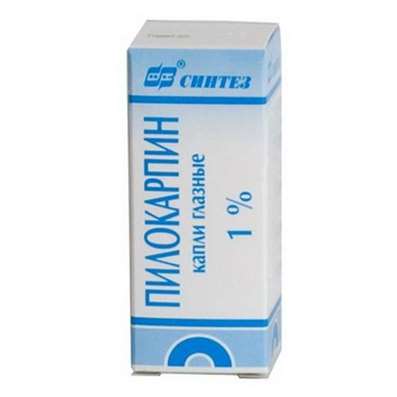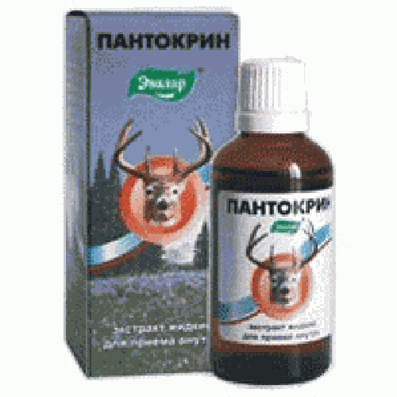Instruction for use: Thymodepressin
I want this, give me price
Dosage form: Nasal drops; Solution for intramuscular injection; Solution-drops nasal; Nasal dosing spray; Substance-powder
ATX
L04AX Other immunosuppressants
Pharmacological group:
Immunosuppressive agent [Immunodepressants]
The nosological classification (ICD-10)
C84 Peripheral and cutaneous T-cell lymphomas: Malignant lymphoma; Cutaneous lymphoma; Cutaneous T-cell lymphoma; Lymphoma T-cell; T-cell lymphoma
C85 Other and unspecified types of non-Hodgkin's lymphoma: Lymphoma of mixed type; Lymphomas from cells of the mantle zone; Malignant lymphoma; Lymphoma non-Hodgkin's disease; Lymphocytic lymphoma
C91 Lymphoid leukemia [lymphatic leukemia]: Lymphatic leukemia; Lymphoproliferative diseases; Neuroleukemia; Refractory acute lymphoblastic leukemia; Refractory lymphoblastic leukemia; Transformation of preleukemias; Chronic lymphocytic leukemia; Lymphoproliferative disorders
D59.1 Other autoimmune hemolytic anemia: Autoimmune hemolytic anemia; Immune hemolytic anemia; Autoimmune hemolytic anemias
D69.3 Idiopathic Thrombocytopenic Purpura: Werlhof's Disease; Idiopathic autoimmune thrombocytopenia; Idiopathic thrombocytopenic purpura of adults; Idiopathic thrombocytopenic purpura in adults; Immune idiopathic thrombocytopenic purpura; Immune thrombocytopenia; Bleeding in patients with thrombocytopenic purpura; Evans Syndrome; Thrombocytopenic purpura; Thrombocytopenia of immune origin; Chronic idiopathic thrombocytopenic purpura; Essential thrombocytopenia; Autoimmune thrombocytopenic purpura in pregnancy; Posttransfusion purpura
D69.5 Secondary thrombocytopenia: Secondary cytopenia
D69.6 Thrombocytopenia, unspecified: Hemorrhagic diathesis of thrombocytopenic origin; Hemorrhagic syndrome of thrombocytopenic origin; Idiopathic thrombocythemia; Thrombocytopenia; May-Hegglina anomalies; Hereditary thrombocytopathies; Fever with thrombocytopenia
D72.8.0 * Leukopenia: Autoimmune neutropenia; Congenital neutropenia; Granulocytopenia; Idiopathic and drug-induced leukopenia; Idiopathic neutropenia; Leukopenia aplastic; Leukopenia radiation; Leukopenia with radiation therapy; Radiation leukopenia; Hereditary neutropenia; Neutropenia in patients with AIDS; Periodic neutropenia; Radiation leukopenia; Persistent neutropenia; Febrile neutropenia; Two-stage cytopenia; Radiation cytopenia; Neutropenia is cyclic
L10 Pemphigus [pemphigus]: Benign pemphigoid of the mucous membranes; Bubble dermatosis; Pemphigus; Dermatitis, vesicular; Benign pemphigus; Ordinary pemphigus; Pemphigus; Bubble dermatitis; Family benign pemphigus Hailey-Hailey
L20 Atopic dermatitis: Allergic diseases of the skin; Allergic skin disease noninfectious etiology; Allergic skin disease etiology nemikrobnoy; Allergic skin diseases; Allergic skin lesions; Allergic reactions on the skin; atopic dermatitis; Allergic dermatosis; Allergic diathesis; Allergic itching dermatosis; Allergic skin disease; Allergic skin irritation; allergic Dermatitis; atopic Dermatitis; allergic dermatoses; exudative diathesis; Itchy atopic eczema Itchy allergic dermatosis; Allergic skin disease; Cutaneous allergic reaction to drugs and chemicals; Cutaneous reactions to medications; Skin and allergic disease; Acute eczema; common neurodermatitis; Chronic atopic dermatitis; Exudative diathesis
L30.9 Unspecified Dermatitis: Allergic dermatoses complicated by a secondary bacterial infection; Anal eczema; Bacterial maturation; Varicose Eczema; Venous dermatitis; Inflammation of the skin; Inflammation of the skin upon contact with plants; Inflammatory Skin Disease; Inflammatory Skin Diseases; Inflammatory Skin Diseases; Inflammatory skin reactions; Inflammatory processes of the skin; Hypostatic dermatitis; Fungal Eczema; Fungal dermatosis; Dermatitis; Dermatitis is stagnant; Dermatitis and eczema in the anal area; Dermatitis acute contact; Perianal dermatitis; Dermatosis; Dermatosis of the scalp; Dermatosis of psoriasis; Dermatosis with persistent itching; Dermatoses; Dermatoses itchy; Other itching dermatoses; Significant eczematous manifestations; Itching with dermatoses; Itching eczema; Itching dermatoses; Itching dermatitis; Itching dermatosis; True eczema; Skin reaction to insect bites; Skin itching with dermatosis; Constitutional eczema; Weeping eczema; Drowsing inflammatory skin disease; Dying Infectious-Inflammatory Skin Disease; Non-allergic dermatitis; Nummular eczema; Acute contact eczema; Acute inflammatory skin disease; Acute dermatosis; Acute severe dermatosis; Perianal dermatitis; Superficial dermatosis; Subacute Contact Eczema; Simple dermatitis; Occupational dermatitis; Psychogenic dermatosis; Bubble dermatitis of newborns; Pustular eruptions; Irritation and redness of the skin; Low-flammable eczema; Dry atrophic eczema; Dry eczema; Toxic dermatitis; Ear eczema like dermatitis; Chronic eczema; Chronic dermatosis; Chronic dermatosis; Chronic common dermatosis; Scaly papular dermatosis; Eczema; Eczema anal region; Eczema of the hands; Eczema Contact; Eczema lichenized; Eczema Nummular; Eczema acute; Eczema acute contact; Eczema subacute; Eczematous dermatitis; Eczema-like rashes; Ecome exogenous; Endogenous eczema; Gluteal dermatitis; Limited itching dermatitis
L40 Psoriasis: Chronic plaque psoriasis with diffuse; generalized psoriasis; Psoriasis of the scalp; hairy parts of the skin; A generalized form of psoriasis; Psoriazoformny dermatitis; Psoriasis complicated with erythroderma; disabling psoriasis; Isolated psoriatic plaque; Eksfolliativny psoriasis; psoriatic erythroderma; Psoriasis with eczematization; Hyperkeratosis in psoriasis; Inverse psoriasis; Psoriasis ekzemopodobnye; dermatoses psoriazoformny; Psoriasis genitals; Psoriasis lesions with hairy areas of the skin; erythrodermic psoriasis; Chronic psoriasis of the scalp; Chronic psoriasis; ordinary psoriasis; refractory psoriasis; Koebner phenomenon; psoriasis
M06.9 Rheumatoid arthritis, unspecified: Rheumatoid arthritis; Pain syndrome in rheumatic diseases; Pain in rheumatoid arthritis; Inflammation in rheumatoid arthritis; Degenerative forms of rheumatoid arthritis; Children's rheumatoid arthritis; Exacerbation of rheumatoid arthritis; Acute articular rheumatism; Rheumatic arthritis; Rheumatic polyarthritis; Rheumatoid arthritis; Rheumatic polyarthritis; Rheumatoid arthritis; Rheumatoid arthritis; Rheumatoid arthritis of active course; Rheumatoid periarthritis; Rheumatoid polyarthritis; Acute rheumatoid arthritis; Acute rheumatism
M35.9 Systemic affection of connective tissue, unspecified: Hyperplasia of connective tissue; Diffuse connective tissue disease; collagen disease; Collagen diseases; collagenase; Systemic diseases of connective tissue; Diffuse connective tissue disease
T66 Unspecified radiation effects: Radiation disease; Diarrhea radiation; Gastrointestinal syndrome with irradiation; Radiation sickness; Radiation disorders of mucous membranes; Irradiation chronic; Osteoradionecrosis; Acute radiation sickness; Acute and chronic radiation injuries; Acute radiation syndrome with radiation therapy; Subacute and chronic radiation sickness; Radiation Neuropathy; Radiation edema; Radiation damage to the nervous system; Radiation immunodeficiency; Radiation syndrome; Radio-epileleitis; Radiation acute syndrome; State after irradiation; Cytopenia due to previous radiation or chemotherapy; Cytopenia radiation; Cytopenia due to radiation therapy; Cytopenia due to chemotherapy
T86.0 Bone marrow transplant rejection: Rejection during bone marrow transplantation
T86.9 Dying and rejection of transplant (s) organ and tissue, unspecified: Rejection reaction; Rejection reaction during organ transplantation; Graft-versus-host response; GVHD; Transplant rejection reactions
Composition
Solution for intramuscular injection 1 liter
active substance: Gamma-D-glutamyl-D-tryptophan sodium (Timodepressin®) 1 g
Auxiliary substances: sodium chloride - 9 g; Sodium hydroxide solution 1M - to pH 6.0-8.5; Water for injection - up to 1 liter
Spray for nasal application dosed 1 liter
active substance: Gamma-D-glutamyl-D-tryptophan sodium (Timodepressin®) 2.5 g; 5 grams
(In terms of dry matter)
Auxiliary substances: sodium chloride - 9 g; Benzalkonium chloride - 0.1 g; Sodium hydroxide solution 1M - to pH 6.0-8.5; Water for injection - up to 1 liter
Description of dosage form
Colorless transparent liquid; A characteristic odor is allowed.
Pharmachologic effect
Mode of action - Immunosuppressive.
Pharmacodynamics
Synthetic peptide consisting of D-amino acids (glutamic acid and tryptophan), connected by a γ-peptide bond. Has immunosuppressive effect, inhibits the reaction of humoral and cellular immunity. Reversibly reduces the total number of lymphocytes in the peripheral blood, causing a proportional decrease in the level of both helpers and suppressors. Suppresses colony formation and the entry of stem progenitor cells into the S-phase.
Thymodepressin® reduces the number of activation markers on lymphocytes, inhibits the proliferation of T cells.
The drug inhibits the spontaneous production of tumor necrosis factor α (TNF-α), enhances the production of IL-7, does not affect the production of IL-1.
Thymodepressin® reduces the acute graft-versus-host disease (GVHD) and 90% reduces chronic GVHD with the administration of the preparation to the donor and recipient, promotes faster and more cooperative release of progenitor cells into the proliferative phase and the recovery of leukopoiesis.
Thymodepressin® is non-toxic, effective at low doses, and has a wide therapeutic dose range.
Pharmacokinetics
When parenteral introduction, about 90% of the drug enters the systemic circulation. With intranasal administration of the preparation, Thymodepressin®, its bioavailability is at least 90%. Cmax of the preparation Thymoadressin® in the systemic circulation is reached 5 min after its parenteral administration.
Suction
When parenteral application, the absorption of the drug occurs at the injection site. With intranasal application, absorption occurs from the mucous membranes of the nose.
Metabolism
The drug is metabolized by 70% in the liver.
Distribution
Cmax in organs and tissues is reached 15 minutes after the administration of the drug. In the bone marrow and liver, Cmax exceeds that in blood by 9.5 and 3.45 times, respectively. In plasma, the concentration of the preparation Thymodepressin® is 1.5 times higher, i.å. The drug predominantly accumulates in the plasma, and not in the blood cells.
Excretion
In parenteral and intranasal administration, the excretion of Thymodepressin® occurs in the urine (55-59%), as well as with faeces (13-19%). T1 / 2 is about 14 hours. The drug is completely excreted within 24 hours and does not accumulate in the body.
Indication of the drug Thymodepressin
Thymodepressin® is used in adults and children from the age of two, is used both in monotherapy and in the complex treatment and prevention of relapses of various autoimmune diseases:
Chronic recurrent dermatoses (psoriasis, pemphigus, atopic dermatitis, eczema, symptomatic treatment of T-cell lymphomas of the skin);
Autoimmune pathology of connective tissue (rheumatoid arthritis and other autoimmune diseases of connective tissue, secondary rheumatoid syndrome in the background of lymphatic and other tumors);
Hematological diseases (autoimmune hemolytic anemia, idiopathic thrombocytopenic purpura, two- and three-rooted cytopenia, including secondary ones on the background of lymphocytic lymphomas and chronic lymphocytic leukemia, the treatment scheme is selected individually);
Cytostatic chemo- and radiotherapy (protection and preservation of stem cells and acceleration of the exit from granulocytopenia);
Prevention of transplant rejection during organ and tissue transplantation;
Bone marrow transplantation (prevention of transplant rejection).
Contraindications
Individual intolerance to the drug;
Uncontrolled arterial hypertension;
Infectious and viral diseases in acute phase;
pregnancy;
lactation.
Side effects
After the second course of treatment with Thymodepressin®, a transient decrease in the number of white blood cells is possible, with the preservation of the leukocyte formula of peripheral blood. Allergic reactions.
Interaction
It is not recommended to appoint simultaneously with drugs that have an immunostimulating effect.
When combined with cytostatics, Thymodepressin® does not reduce their antitumor effect.
Dosing and Administration
IM, intranasal.
Chronic recurrent dermatosis, psoriasis. Thymodepressin® is administered IM for 1-2 ml of the solution daily for 7-10 days, then 2 days for a break, and again for a similarly-introduced administration cycle. Depending on the clinical situation, you can spend 3 to 5 cycles. Repeated cycles can be carried out up to 5 times.
Intranasal Thymodepressin® is used primarily as maintenance therapy and for the prevention of relapse, as well as in the treatment of children. The drug is administered 1-2 doses (0.25 or 0.5 mg / dose) of the nasal spray to each nasal passage daily for 7-10 days, the course of treatment can be prolonged after a two-day break.
In patients with generalized psoriasis erythrodermia, Thymedypepress® is given intravenously with 2 ml of the solution daily for 14 days, then intranasally with simultaneous addition of GCS at medium doses.
Atopic dermatitis. Thymodepressin® is given IM for 1-2 ml of the solution daily for 7-14 days, the course of treatment can be prolonged after a two-day break.
Thymodepressin® is administered at 1-2 doses (0.25 or 0.5 mg / dose) of the nasal spray to each nasal passage daily for 7-14 days, the course of treatment can be prolonged after a two-day break.
The duration of the course with IM and intranasal administrations and their number is determined by the clinical and morphological features of the disease.
Eczema. Thymodepressin® is given IM for 1-2 ml of the solution daily for 10 days, then for 2-5 days a break, and again a similar time-cycle of administration is repeated.
The drug is prescribed for 1-2 doses (0.25 or 0.5 mg / dose) of the nasal spray in each nasal passage daily for 10 days, followed by a break of 2-5 days and a repeated ten-day course.
T-cell lymphoma of the skin. With this disease, the drug is injected IM 2 ml of solution daily 3 7-day courses with five-day intervals against the background of medium doses of GCS (30-40 mg prednisolone).
Pemphigus. The drug is used for various types of pemphigus in complex treatment with GCS. Thymodepressin® is prescribed IM for 1 ml of solution daily for 2 weeks in complex therapy with prednisolone (60-80 mg / day). After 7-10 days after the start of treatment, the daily dose of prednisolone is reduced by 1/3, followed by a gradual decrease in the dose of prednisolone (by 5 mg every 4-5 days). If necessary, maintain a maintenance dose of prednisolone - 5 mg per day.
Rheumatoid arthritis. Thymodepressin® is given IM on 1-3 ml of solution daily for 7-14 days, then 2 times a week. The course of treatment is 16 weeks.
The drug is used intranasally primarily as a maintenance therapy and for the prevention of recurrences of 1-2 doses (0.25 or 0.5 mg / dose) of the nasal spray in each nasal passage daily for 7-14 days. Then 2 times a week for 1-2 doses. The course of treatment is 16 weeks.
Application after cytostatic therapy. To reduce the myelotoxic effect of cytostatic therapy, timedepin® is prescribed daily for 5-7 days per 1-2 ml of solution. The administration of the drug is started 24-48 hours before the first course of cytostatic chemotherapy (1 st and 2 nd introduction). The 3-rd administration is performed 12 hours before the start of polychemotherapy. Depending on the duration of the course of chemotherapy, the drug continues to be injected daily with 1-2 ml of the solution once a day. The main efficacy index is the number of leukocytes and granulocytes 3 days before the start of the next course of cytostatic therapy.
To reduce the myelotoxic effect of cytostatic therapy, Thymodepressin® is administered intranasally daily for 5-7 days with 1-2 dosages of nasal spray containing 0.25 or 0.5 mg / dose in each nasal passage or fractional at 1 dose of 0.25 or 0 , 5 mg / dose of nasal spray in one nasal passage 2-3 times a day.
The administration of the drug is started 24-48 hours before the first course of cytostatic chemotherapy (1 st and 2 nd introduction). The 3-rd administration is performed 12 hours before the start of polychemotherapy. Next, daily, once a day for 2-5 days, apply a spray, depending on the duration of the course of chemotherapy. The main efficacy index is the number of leukocytes and granulocytes 3 days before the start of the next course of cytostatic therapy.
Thyimodepressin® is indicated for use IM and intranasal before polychemotherapy courses having a duration of no more than 2 weeks and interruptions of at least 2 weeks. With long, continuous regimens of cytostatic administration, its use is impractical.
With a recurring course of primary and secondary autoimmune cytopenias, Thymedepryin® is recommended to use the first 2 courses as injections, then, with a positive effect, it is possible to switch to a course application of the drug intranasally for several months to stabilize the process.
If the effect from the first courses of the drug is inadequate, it is recommended to increase the daily dose by 2-3 times and to shorten the break between the courses to 7 days. After achieving the effect, it is necessary to carry out supportive course treatment, during which the dose of the drug can be reduced, and the break between the courses to increase.
In severe recurrent course, Thymodepressin® is administered in combination with cytostatic immunosuppressants, the dose of which decreases by a factor of 2, and when the effect is achieved, cytostatic immunosuppressants are canceled.
Dosage regimen in children's practice. For children from 2 to 12 years, Thymedepressin® is prescribed IM for 0.5-1 ml of the solution for the / m administration once a day for 7-10 days, then break for 2 days and, if necessary, repeat the course. It is possible to hold 1 to 5 courses.
Children over 12 years of age Thymedepressin® are given an intravenous injection of 1-2 ml of injection for once a day for 7-10 days, then a break for 2 days, then another 1-2 courses for 7-10 days.
For children from 2 to 12 years of age, Thymodepressin® is administered intranasally by 1-2 doses of a nasal spray containing 0.25 or 0.5 mg / dose to each nasal passage 1 time per day for 7-10 days, then a 2-day Break and, if necessary, the repetition of the course is appointed. It is possible to hold 1 to 5 courses.
Children over 12 years of age Thymdownressin® are given intranasally 1-2 doses of 0.25 or 0.5 mg / dose of nasal spray per each nasal passage 1 time per day for 7-10 days, then break for 2 days, then 1-2 Course for 7-10 days.
Overdose
Cases of overdose when using the drug are unknown.
Special instructions
The use of Thymodepressin®, like other immunosuppressants, predisposes to exacerbation of latent bacterial, fungal, parasitic and viral infections. At the first clinical manifestations of the infectious process, it is necessary to assign the appropriate pathogenetic therapy.
If you have an unforeseen effect of the drug, you should consult your doctor.
Release form
Solution for the IM introduction, 1 mg / ml. In ampoules of glass for 1 ml; In packs of contour cells for 5 pcs .; In a pack of cardboard 1 or 2 packs of contour mesh.
Spray nasal dosed, 0.25 or 0.5 mg / dose. In glass bottles, ukuporennyh aluminum caps or glass lids, equipped with dosing pumps with plastic casing, nozzle and protective cap, with pasted labels from writing paper or label, or self-adhesive labels, 3, 5 or 10 ml; In a pack of cardboard 1 bottle.
Manufacturer
Solution for the IM introduction
FSUE Moscow Endocrine Plant. 109052, Moscow
Spray nasal dosed
ZAO MB NPK Citomed. 191023, St. Petersburg
Name and address of the legal entity in whose name the registration certificate / organization authorized to receive claims was issued: OOO Peptos Pharma, Russia, 117997, Moscow
Conditions of supply of pharmacies
On prescription.
Storage conditions of the drug Thymodepressin
In the dark place at a temperature of 2-15 ° C.
Keep out of the reach of children.
Shelf life of the drug Thymodepressin
Solution for intramuscular injection 1 mg / ml - 3 years.
Spray nasal dosed 0.25 mg / dose - 2 years.
Spray nasal dosed 0.5 mg / dose - 2 years.
Do not use after the expiry date printed on the package.

 Cart
Cart





